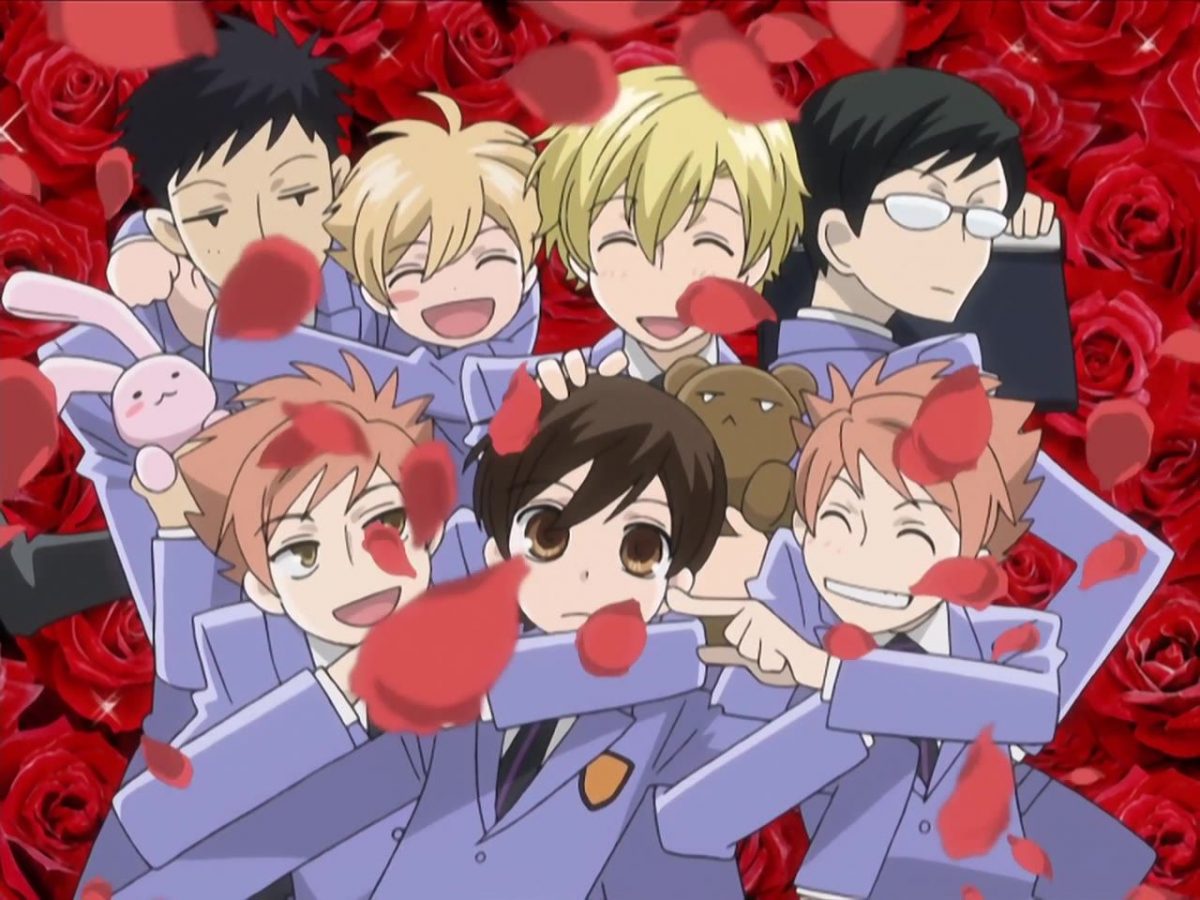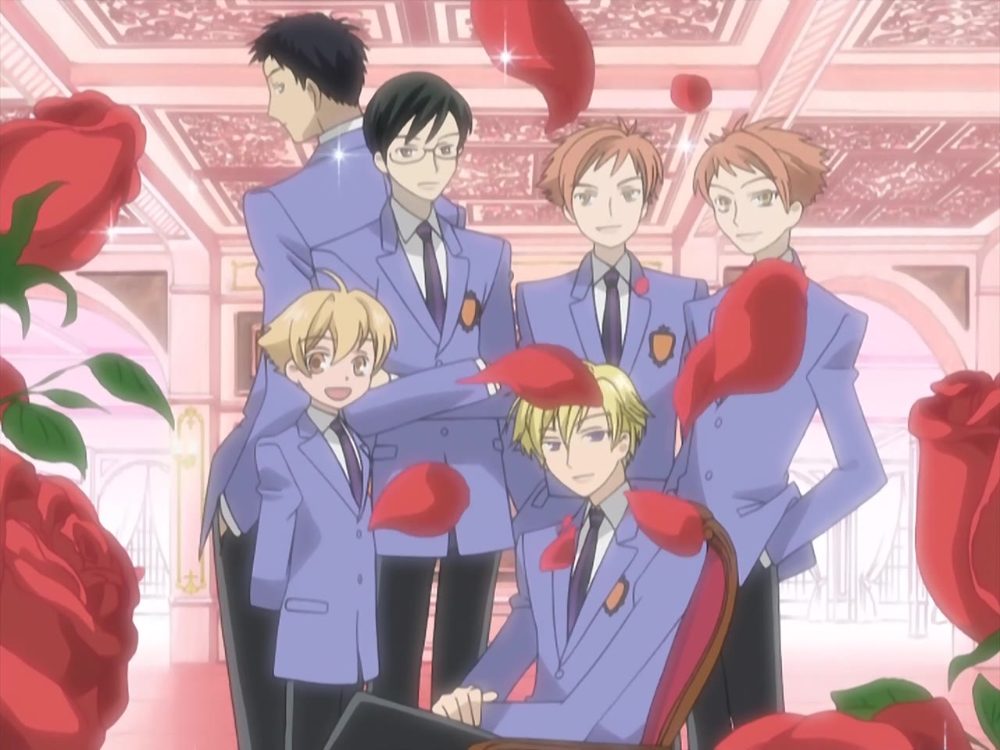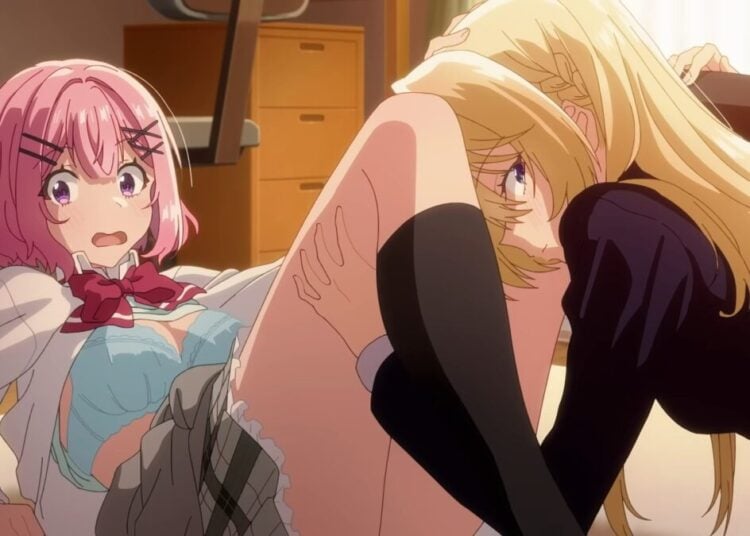
As with many series that I’ve completed throughout my anime career, my first experience with Ouran High School Host Club was with the anime, a couple of years after it first premiered in Japan. I fell in love instantly with the crazy yet charming characters and over-the-top sense of humor presented within the 26 episodes. Recently, however, I decided to fill in another gap in my manga database by checking out the original manga, created by Bisco Hatori. This leaves the big question, which did it better?
Originally a manga series that was serialized in Lala magazine from 2002 to 2010, Studio BONES produced the anime adaptation, and it ran for 26 episodes in 2006. The story of the romantic comedy follows Haruhi Fujioka, a poor first-year high school girl who manages to get into the elite Ouran Private Academy. The school is filled to the brim with the offspring of the richest families that Japan has to offer. One day, while searching for a quiet place to study, Haruhi stumbles across the school’s host club and, after an incident occurs, is roped into joining the club and hiding her gender in order to pay off an eight million yen debt.
Making up the host club is an eccentric cast of characters who all fall into their own purposely tropey categories, including the princely type Tamaki Suoh, the twisted and cynical identical twins Kaoru and Hikaru Hitachiin, the cool type Kyoya Otori, the boy lolita Mitsukuni Haninozuka, and the strong and silent type Takashi Morinozuka. All of these characters play up their roles to absurd lengths for hilarious results.

Let’s make one thing perfectly apparent right from the start; this is an excellent series. This is a series that deserves every ounce of praise that it gets, plus so much more. A true classic. So no matter how you choose to approach this series, you’re in for a wonderful time. Does that establish how I feel about this series in general? Ok, good.
That said though, there are distinct differences between the manga and anime which puts one above the other. The anime itself covers about nine volumes of manga and only really touches on the origin stories of the characters and the host club itself. To hear that, you might think that the anime would be boring, since 26 episodes worth of origin stories can sound like a real slog. What makes this series so stellar though is that the development of the characters is sprinkled in throughout the entire run, which keeps things fresh and lively. This is true for both versions of the story, so this might make it sound like they are equal to each other. The place where the anime surpasses the manga, however, is in the story’s presentation and the visuals that it uses.
Where the anime excels over the original source material is in its choice of visuals in certain key moments and how it wraps up storylines much more cleanly. One big example of the latter point is the second time that the audience sees the Zuka club from Lobelia Academy. In this appearance, the club kidnaps Haruhi and forces her to take part in a play of theirs. In the manga, this story ends very abruptly with no real conclusion. In the anime, however, the story is given time to breathe and they give the Zuka club a real driving motivation which ties the story up a lot more cleanly.
In terms of the visuals, one only has to look at episode 24, which shares the story of Tamaki and Kyoya’s friendship beginning. The episode itself is wonderful in both the anime and manga, but the anime adds something amazing in the form of a painting outside of the frame, creating a much larger picture. This visual, which symbolizes Tamaki’s ability to push Kyoya outside of his own personal box, isn’t present in the manga, but adds so much more than what they originally presented.
It’s more than just the visual presentation, though. The anime is much more streamlined than the manga is. While the manga presents new characters (I did not know that Mori had a younger brother) just for the sake of doing so, the anime removes these smaller characters and just gives more time to the club’s manager Renge instead.
In the end, both versions of Ouran High School Host Club are fun, and while the anime never got the richly deserved second season that it needed, it is just a better presentation overall and tells the story better than the manga. Regardless, this is a series that everyone should add to their list of completed series post haste.



![Sawaranaide Kotesashi Kun Episode 12 [END] Featured Image](https://blog.jlist.com/wp-content/uploads/2025/12/Sawaranaide-Kotesashi-kun-Episode-12-END-Featured-Image-750x536.jpg)










